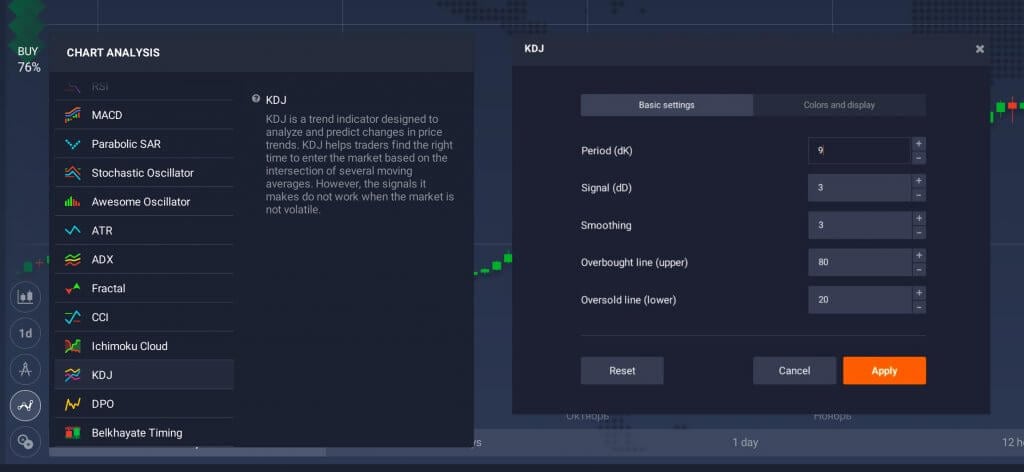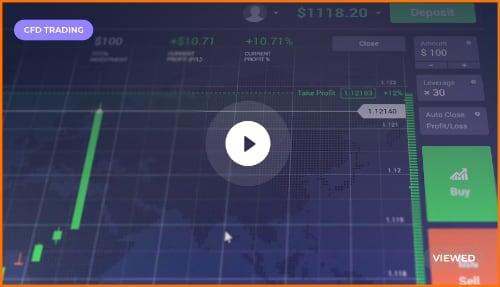KDJ indicator is ideal to identify optimal transaction entry points and trends. It’s based on a Stochastic Oscillator with signal lane ‘J’. Read more about how to use it?
KDJ indicator is a technical indicator used to analyze and predict changes in stock trends and price patterns in a traded asset. KDJ indicator is otherwise known as the random index. It is a very practical technical indicator that is most commonly used in market trend analysis of short-term stocks.
The KDJ is an indicator designed for the sole purpose of making trading as effective as possible, and it undoubtedly deserves your attention. The KDJ is perfect for determining both the trend and the optimal entry points.
To those of you who already know basic technical analysis tools, the KDJ might look similar to the Alligator or the Stochastic Oscillator. Just like these two tools, it allows you to determine the direction and strength of the trend and the optimal entry points.
It is worth noting that, like any other indicator that follows the trend, The KDJ provides many false signals at times when the market is flat. For this reason, many traders consider it appropriate to use it over prolonged time intervals.
How does it work?
The KDJ consists of three lines (K, D and J, which give the name to the indicator) and of two levels. The K and D lines are the same as those displayed when using the Stochastic Oscillator. The J line, on the other hand, represents the divergence of the value D from the value K. The convergence of these lines suggests a trading opportunity.

As in the Stochastic Oscillator, the overbought and oversold levels correspond to times when the trend could be reversed. By default, the levels are set to 20% and 80%. Both can be adjusted to achieve greater sensitivity or fewer false signals.
How to use it?
You can set the indicator in three simple steps:
- Go to “Indicators” (bottom left on the screen);
- Select the KDJ from the list of available indicators;
- Click Apply without changing the values.
The indicator is ready to be used! Which signals do you need? There are two types of signals that you can receive from the KDJ. When the three lines converge above the overbought level, with the blue line above the yellow and the yellow above the purple, it is advisable to sell the asset. And vice-versa. When lines converge below the overbought level, with the purple line above the yellow line and the latter above the purple line, it may be the case buy the asset.
Video explaining how KDJ works
Aspects to consider
For best results, the KDJ can be combined with other indicators, such as the average directional index (ADX) and the average real interval (ATR). The first one is always before the curve and can suggest the next inversion of the trend. The last one is able to determine the volatility of the market, which is particularly useful since the KDJ does not work during the flat market periods.
Remember that there is no indicator capable of providing 100% accurate signals. Even the best indicators fail from time to time, leading to negative operations. Regardless of the indicators, you entrust yourself with, do not forget to follow the basic rules of risk management and of the funds to be invested.
Source:







 How to trade CFD? (00:49)
How to trade CFD? (00:49) How to trade binary options*? (01:22)
How to trade binary options*? (01:22) Forex. How to start? (01:01)
Forex. How to start? (01:01)